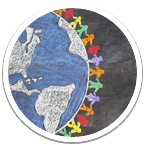Part 2: Norms, i.e. how racism is repeatedly normalized
In part two, Postdoctoral Researcher and Doctor of Social Sciences Minna Seikkula discusses societal norms and how to dismantle them with a view to racism. Racism is not a natural or permanent structure.
Instead, people reinforce and maintain it through their actions. Racism involves a power system that has become embedded in human behaviour during the course of our history. In this system, people identified as white Europeans have more privileges and power than others.
Norms are rules, expectations, and repeated actions produced in the context of human behaviour to create an image of what is normal. Since racism is not a natural or permanent structure, it is possible to change racist structures by systematically modifying human behaviour in the long run. To combat racism, we must change how things are done.
Materials supporting learning
Key concepts:
- norms
- racialisation
- normative whiteness
- intersectionality
- microaggression
Read more about the key concepts.
Reflect on the following questions:
- What kind of norms are there in Finland that describe what a Finn must be like?
- What does the white standard mean?
- Why does reverse racism not exist? What does Seikkula mean by everyday racism?
- What is the definition of intersectionality?
- How can you identify your own normative perceptions?
- Why is it important to identify and break down such perceptions in order to promote anti-racism?




